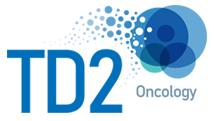There are two categories for INDs: commercial and research. The main difference is who submits the application to FDA and the intended purpose of their clinical research. The FDA publishes guidelines to help ensure you submit a complete IND application. A majority of those guidelines are addressed to applicants seeking a commercial IND.
IND Commercial Category
When a drug company or sponsor, like the National Cancer Institute, submits an IND application, it is generally considered a commercial IND. The intended purpose of their clinical research is to collect the data needed to bring the drug to market. The FDA requires clinical investigation data to approve a drug for market to doctor and patients.
Even when a non-profit research entity applies for an IND, the intention is to eventually make that drug available on the open market. Even when not driven by a profit motive, the large-scale distribution of a drug is considered a commercial venture.
The application for a commercial IND can be lengthy as compared to a research IND. The clinical trials are often conducted at multiple locations, making the testing protocols more complex. There are often several investigators involved in this type of IND, all of whom need to be included, with their credentials, in the application.
IND Research Category
Physician-submitted IND applications are generally considered research INDs when they are not trying to bring a new drug to market. Instead, their clinical research may be intended to prove efficacy for a new indication of an already approved drug. The clinical research that doctors complete is often meant to test a new dosage or indication but that data is not intended to be used for a subsequent application for market approval.
When clinical research is done purely to prove a theory or improve the use of an existing treatment, a research IND is required. The application package for this type of IND is generally smaller and less complex than that for a commercial IND. There are fewer investigators involved in this type of research, and it is often done at just one location.


